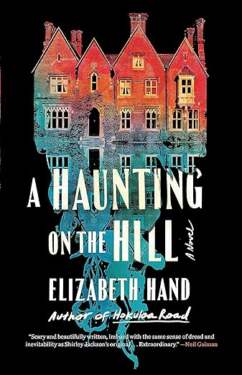British author Liz Nugent’s newest work, “Strange Sally Diamond,” unpacks decades of trauma caused by one man’s pathological sickness.
The story opens in 2018 when 42-year-old Sally Diamond learns of her tragic heritage after her adopted father dies. Sally is the product of a kidnapping and rape that happened decades ago in Killiney, Ireland. She has no memory of her life before being adopted by Dr. Tom Diamond and his wife Jean. She learns through medical records and media reports that her mother, Denise Norton, was abducted by dentist Conor Geary at age 11 and held captive and raped in an annex attached to his family home for 14 years.
When the public learns Sally’s identity as Mary Norton, she’s hounded by the press and overwhelmed by attention from her neighbors and distant relatives. Nugent writes Sally as a sheltered, struggling, angry but well-intentioned woman who is trying to find herself while learning how to control her emotions and survive as an adult.
But, Sally isn’t the only character who’s suffered long-term effects of Conor’s perverseness.
The novel also includes the point of view of Steven Armstrong, Sally’s unknown older brother who was born Peter Geary seven years before her to a 12-year-old Denise.
Conor loved his son and removed him from the hovel where Denise was imprisoned to raise him. Steven was never allowed to attend school, make friends, or even touch another person. Such isolation and the manipulation stunt Steven’s emotional development and cause him to act erratically throughout his life.
Both Sally and Steven have deep-seated emotional scars and a luggage carousel’s worth of baggage. The two meet and the novel concludes on a bleek note reflecting that healing isn’t a linear process.
“Strange Sally Diamond” doesn’t offer much hope of redemption for people who have
Nugent spends a lot of time summarizing what Sally and her brother endured, were told, and what they learned from documents to compress a story told over 50 years into a 309-page book.
Character Analysis
Sally Diamond is a pathetic character whose reserved misanthropic style makes it difficult for readers to grow attached to her, despite a desire to see her succeed. She’s no-nonsense, painfully literal, and direct to the point of rudeness. Knowing she was the product of a terrible crime and that the couple raising her never told her the trust, Sally lives a life of arrested development until circumstances force her to attend therapy, practice mindfulness and empathy, and work to develop friendships.
Sally’s guardians and newfound friends also play small, but pivotal roles in the narrative arc. The most prominent are Aunt Christine, Angela, Sue, and Martha.
Her progression of self-discovery and self-sufficiency guides the novel.
The interwoven story of Steven Armstrong runs parallel beginning in the 1970s and going through 2020. Because the story is written from his perspective as a child in the past, he’s often passive and directed. This means his interior thoughts are limited and underdeveloped.
It isn’t until Conor Geary’s death in 1985 that Steven is allowed to become a fully-developed character. He then works against how he was raised to think about women and begins a strained but consensual relationship with a woman that ends, leaving him lonely and further estranged from the world.
He too has social difficulties, remains trapped by past trauma, and is reluctant to interact with people. Additionally, Steven is jealous of the opportunities Sally’s adoption afforded her and hates that she squandered them.
Conor Geary, the story’s villain, has been dead for nearly 25 year, by the time Sally and Steven connect. His brief backstory is explained via Sally’s lunch meeting with his surviving sister, Margaret, who feels awful about her brother’s crimes and attempts to atone before her own passing.
Mark Butler is a secondary character who represents the Norton family. He was 4 years old when his adored older sister was kidnapped. Despite moving on from her disappearance, the publicity around Sally’s birth story ignites an insatiable desire to know more about what happened. He also resents Sally’s existence and feels she’s part of the cause of his sister being taken from him and his family.
Final Thoughts
“Strange Sally Diamond” is my biggest disappointment of 2023. I found the novel to be reminiscent of “The Last House on Needless Street” by Catriona Ward, “Room” by Emma Donoghue, and a selection of V.C. Andrews novels. The plot could have been pulled from several episodes of “Law & Order: Special Victims Unit” and other series about how early childhood trauma can have lifelong negative effects.
My biggest issue with the novel is how distant the writing feels. Both Sally and Steven relay information in past tense and are told important information through conversations with authority figures, reading it, or looking it up online. Nugent makes no attempt to really connect readers to either character, we observe them as they develop unhealthy coping mechanisms to function and repress their respective pasts.
The multi-decade timeframe and severely damaged characters took me out a story that could have been more tightly written with a stronger, clearer attachment to the interior lives of Conor’s troubled children.
If you choose to read “Strange Sally Diamond,” be aware that it promises no happy endings for the children born of a predator and his many victims.
Rating
My rating is 2.25 out of 5 stars.
Book Details
Title: “Strange Sally Diamond”
Author: Liz Nugent
Year of Publication: 2023
Number of Pages: 309









